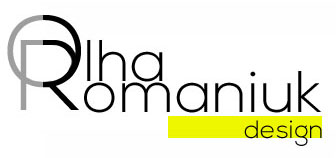An exhibition of Sori Yanagi’s works showcases the designer’s practicality and artistry and reveals his unending resourcefulness through a range of timeless products and designs, reports Olha Romaniuk.
“I try to create things that we human beings feel are useful in our daily lives. During the process, beauty is born naturally,” these words, once uttered by the prolific Japanese designer, Sori Yanagi, set a poignant basis for the curatorial approach of Beauty Born, Not Made exhibition, celebrating Yanagi’s lifetime dedication to creating products and furniture pieces that are, at once, anonymous in their practical simplicity and timeless in their intuitiveness of design.
The exhibition, curated by the multidisciplinary design collective Outofstock, takes a closer look at the lifelong career of the celebrated designer through an examination of Yanagi’s creative processes and hands-on methodologies, where art and function are always mutually inclusive.
“Whatever he designed, he shaped it by hand. He never sketched or did a technical drawing; he was very hands-on in his approach,” says Gustavo Maggio of Outofstock about Yanagi’s way of working, “this is also the reason behind the title of the exhibition Beauty Born, Not Made. It is a reference to shapes and objects being born out of a relationship between a creator and an object or a creator and a material – a principle that was embedded in Yanagi’s practice.”
In a calm and dimly lit exhibition space of Lim Hak Tai Gallery at the Nanyang Academy of Arts, where the exhibition is currently taking place, visitors can immerse themselves in the creative processes that have been the driving forces behind Yanagi’s designs ever since the beginning of his career. The setting of the exhibition is designed to express to its visitors the essence of Yanagi’s studio, complete with videos of craftsmen at work and sounds composed of faint musical chants reminiscent to those heard at Buddhist temples.
The exhibition set-up within the gallery allows visitors to view the iconic products and furniture pieces, like the Butterfly stool and Elephant stool, against the central display podiums showcasing the fabrication processes explored by Yanagi in order to arrive at the resulting pieces. Maggio attests to the unique quality of Yanagi’s designs: “What is interesting for us is that when you view his work, it doesn’t look like it was done in the 50s. It still looks contemporary due to the way he approached design. As far as flashy, trendy products go, most of those things go into mass production and become dated. Yanagi’s pieces look like any of them could be produced and used today.”
The exhibition displays also reveal the diversity of Yanagi’s experimentation with fabrication techniques. Having inherited the curiosity in hands-on fabrication from his father, Soetsu Yanagi, who led the Mingei movement that celebrated Japanese folk craft, Yanagi combined the physiological and psychological aspects of design, declining to use digital or automated methods of fabrication and opting for handmade mock-ups and one-to-one scale models to perfect his craft.
Exhibiting the breadth of the products developed in his studio, from kitchenware and furniture to electronics, tapestry pieces and magazine covers, Beauty Born, Not Made succeeds in conveying Yanagi’s unchanging desire to combine aesthetics with functionality. “He wanted people to want to use the products,” confirms Shinichi Yanagi, his son, and representative director of YANAGI Industrial Design Office, “He wanted them to know that many of his products could be used for hundreds of years. As users buy and take care of the products and pass them down to their daughters or sons, they, in time, can also hand them down to their children. He wanted people to use his products and pass them down from generation to generation.”
The opening of Beauty Born, Not Made corresponds with the re-release of Sori Yanagi’s 2003 book, Essays by Sori Yanagi, translated into English to accompany the exhibition. Excerpts from the book, told in first person and displayed as wall texts throughout the exhibition, convey the fundamental principles of the Japanese designer’s aesthetic – the values that keep Yanagi studio’s products truly timeless.

